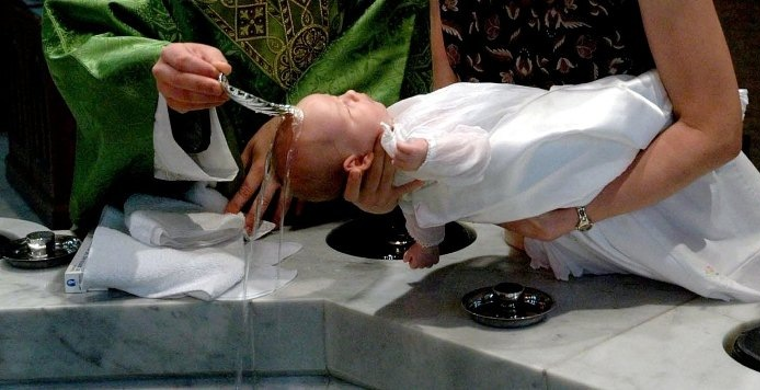Although I am happy to have Lutheran Service Book as the hymnal of our church, that does not mean I think it to be a perfect resource. It is about as good as one can hope for but still have room for improvement. One of the areas I had hoped for more improvement was the Rite of Baptism.
I was disappointed that the exorcism of Luther's 1526 Rite was omitted (yes, I know it is in the Agenda but the things in the pew edition tend to become the norm for most). In any case, Luther's first revision and later Little Book of Baptism offers two exorcisms. The first occurs at the very beginning with exsufflation and then again after the Flood Prayer (although shortened in the 1526 Rite).
| Luther’s 1523 Rite | Luther’s 1526 Rite | Lutheran Service Book, p. 268 |
|---|---|---|
| Excorcism with Exsufflation | Exsufflation | Invocation & Admonition from Holy Scripture |
| Sign of the Cross | Sign of the Cross | Name & Sign of the Cross |
| Two Prayers | One Prayer | |
| Giving of Salt | ||
| Flood Prayer | Flood Prayer | Flood Prayer |
| Exorcism | Exorcism (shortened) | |
| Enrolling of Sponsors | ||
| Prayer | ||
| Mark 10:13-16 | Mark 10:13-16 | Mark 10:13-16 |
| Lord’s Prayer w/ Laying on of Hands | Lord’s Prayer w/ Laying on of Hands | Lord’s Prayer w/ Laying on of Hands |
| Ephphatha | ||
| Blessing & Entrance into the Church | Blessing & Entrance into the Church | Blessing & Entrance into the Church |
| Renunciation of the Devil | Renunciation of the Devil | Renunciation of the Devil |
| Profession of Faith | Profession of Faith | Profession of Faith |
| Anointing on Chest & Back | ||
| Declaration of Intent | Declaration of Intent | Declaration of Intent |
| Baptism | Baptism | Baptism |
| Anointing on Head & Peace | Blessing | |
| White Garment | White Garment | White Garment |
| Baptismal Candle | Baptismal Candle | |
| Welcome | ||
| Prayer & Peace |
I was also disappointed that only the Markan reading with its focus on infants was given as a choice. Surely it would not have been that difficult to include another reading for the baptism of adults -- we still do those, don't we? It was there in Lutheran Worship, after all.
The other thing I note in the Rite of Baptism is something we could have learned from the Service Book and Hymnal. While in the Proposed Rite from Worship Supplement 1969 and the one published in LW chose to have said during the signing of the cross "Receive the sign of the holy cross both upon your forehead and upon your heart to mark you as one redeemed by Christ the crucified," there was an opportunity to make a significant change. Although I do not know the history behind it, in the Order for the Baptism of Infants in the Service Book and Hymnal of 1958, we have this: "Receive the sign of the holy Cross, in token that henceforth thou shalt know the Lord, and the power of his Resurrection, and the fellowship of his sufferings." It seems a little too happy to welcome the child into the fellowship of those redeemed by Christ the crucified without also admitting what this fellowship is about!
One small point is that the giving of the name happens at the very beginning of the LSB Rite and does not enter in other rites until the actual baptism or the question immediately preceding the baptism. Why do we start off with the name when the name should be focused on the baptism itself? Perhaps someone can explain it. Since the 4th century this has not been a small part of the rite itself and it seems downright strange to begin with it since its place has always been in the baptism itself.
The other thing I find odd is the placement of Luther's Flood Prayer. I have always seen Luther's magnificent prayer as a kind of blessing of the font and its water now to be used as vehicle for God's grace. Presuming that I know better than Luther, I move the Flood Prayer from its place right after the sign of the cross and place it instead right after the Blessing and Entrance into the Church and just prior to the renunciation of the devil. I think it works much better here into the meat of what is being done rather than as prelude. You are free to disagree though I am hard to convince.
Well, there you have it. An area in which an already good book might be improved. Ah, well, another day.

It is very interesting to see the reference to the SBH. I liked that Hymnal and thought it the best of any Lutheran Hymnal I've seen.
ReplyDeleteFr. D+
Continuing Anglican Priest